What did George RR Martin do for Elden Ring anyway?
It almost feels like he's a celebrity face for FromSoftware's latest.
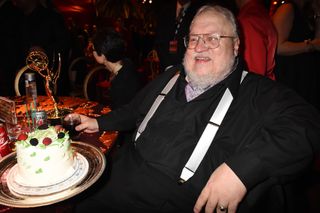
Elden Ring is, so far, absolutely brilliant. I'm bumming around the Lands Between with a jolly tarnished on a horse, rather aimlessly going down whatever blind alleys I fancy, and having a whale of a time doing it. One of the things that has surprised me, however, and has done ever since the game was revealed properly, is that this world feels so thematically of-a-piece with the Souls games.
It's almost a distant memory now, but for the longest time all we had of Elden Ring was a CG trailer and the promise of this collaboration between the Miyazaki-led FromSoftware and Game of Thrones creator and writer George R. R. Martin. At the time, the HBO show was reaching its somewhat divisive climax, but was arguably the biggest entertainment property around. Meanwhile, the Souls series had over multiple games built a reputation for quality, artistry, and sophisticated world-building. This was a match made in heaven.
Point being: It wasn't always clear that this was going to be such a Souls game, which it most definitely is. Miyazaki to be fair did say it would be somewhat similar, calling it in 2019 "a more natural evolution of Dark Souls", but no-one at the time expected it to hew so closely in mechanics and spirit. This is not a bad thing by any means, because these games are among my favourite ever made. But as I'm exploring the Lands Between and coming upon Souls reference after Souls reference, in a world that clearly bears some narrative relation to what's gone on before, it does make me wonder: Where exactly is George RR Martin's hand here?
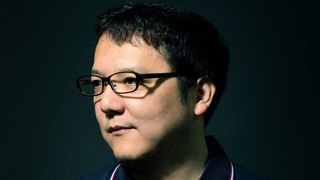
Miyazaki says that the pair had "many free and creative conversations... which Mr Martin later used as a base to write the overarching mythos for the game world itself." So by this he's responsible for the world's founding lore. "This mythos proved to be full of interesting characters and drama along with a plethora of mystical and mysterious elements as well," added Miyazaki. "It was a wonderful source of stimulus for me and the development staff. Elden Ring’s world was constructed using this mythos and stimulus as a base."
Martin himself, celebrating the game's success a few days ago, downplays his role—which may just be graciousness. "Of course, almost all the credit should go to Hidetaka Miyazaki and his astonishing team of games designers who have been laboring on this game for half a decade or more, determined to create the best videogame ever," Martin writes. "I am honored to have met them and worked with them, and to have played a part, however small, in creating this fantastic world and making Elden Ring the landmark megahit that it is."
When I think of Martin's books, I think of jubilant descriptions of banquets and juicy capons co-existing with brutal, unexpected actions; threads of intrigue being woven together, suddenly sundered and re-configured, and rambling, witty digressions on experience. The Song of Ice and Fire series is one of those where, after finishing the first, I immediately went out and bought the next four volumes (and pre-ordered Dances with Dragons!). The question of whether he'll ever finish them doesn't especially bother me: I just loved being in that place, with its heroic, doomed characters and fantastical cut-throat villainy.
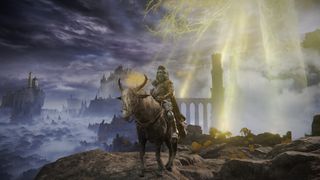
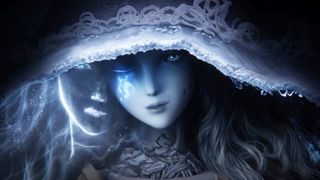
Elden Ring guide: Conquer the Lands Between
Elden Ring bosses: How to beat them
Elden Ring dungeons: How to defeat them
Elden Ring paintings: Solutions and locations
Elden Ring map fragments: Reveal the world
In a way that does sound a bit like what the Souls games are doing, but there's a huge difference in tone. Appropriately enough, Martin's books veer between extremes: the warmth of kinship and unity, the uncaring deadliness of the world around it. The Souls games are much more muted in their expressiveness, and far less warm: The atmosphere and worlds are overwhelmed with sorrow and futility, with your own actions and their consequences morally ambiguous. Miyazaki does not tend to dwell on the pleasures of life, the moments we all snatch out of time's unceasing march to be with others, to relax and enjoy ourselves, whereas for Martin this is an important theme.
The biggest gaming news, reviews and hardware deals
Keep up to date with the most important stories and the best deals, as picked by the PC Gamer team.
That ebullience is no part of Elden Ring, which is not a criticism, and the manner and tone in which its story is told seems like no departure from Souls games past. One of the reasons this so surprised me is that Dark Souls 3 pulled off quite the narrative trick by twisting the previous games' cycles into its own, apparently final, doomed repetition: the only hint of redemption coming in a painter who, when granted the blood of the Dark Soul in the game's final moments, will finish painting a new and better world.
Elden Ring is studded with similar paintings. Not only that, the world re-uses specific and meaningful assets from the Souls games at key locations: I've come across the Lordvessel, layouts that are re-mixed tributes to areas past, oblique references to characters from previous games and then much more explicit ones. There's a character called Irina that asks you take a letter to Morne castle, a reference to two Dark Souls 3 NPCs, while Slave Knight Gael lends his name to two locations in Caelid.
I'm trying not to spoil elements of the lore by going too deeply into it yet, but the presence of a certain merchant, behaving in a certain way, is almost the Souls series' trademark: and in Elden Ring here he is, exactly the same, the constant between these broken worlds.
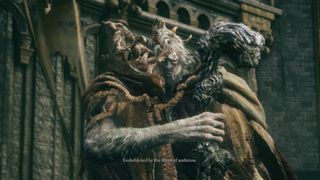
The game's world just doesn't seem all that narratively or thematically different to what has gone before, yet Martin is one of the most revered fantasy writers of our time and has such a distinct style (to me, anyway). In another interview, Miyazaki referred to Martin's contributions being used like a "dungeon master's handbook in a tabletop RPG" which is one of those explanations that's kind of maddeningly ambiguous: Did Martin come up with concepts that were simply From-ified a little much? Thinking on it, the way he builds these huge arcs for characters is almost impossible within Elden Ring's structure which, as in the Souls games, features characters popping in and out along your journey and saying a few brief lines.
It's not that I'm especially bothered by any of this: Hell, I love FromSoft lore and this is another huge helping of it, so fill my plate. It's more that I feel surprised that Martin's contribution is difficult to identify, which, you could argue, shows what a good collaboration it was. It's hard to shake this sense, however, that the narrative structure FromSoft uses and in particular the extreme economy of character interactions has rendered much of his world-building invisible, or subterranean at least. It's certainly not that I doubt Martin's involvement or hard work. It's just odd that, with this game having been marketed so heavily on the collaboration, it's hard to feel it in the final product.
Rich is a games journalist with 15 years' experience, beginning his career on Edge magazine before working for a wide range of outlets, including Ars Technica, Eurogamer, GamesRadar+, Gamespot, the Guardian, IGN, the New Statesman, Polygon, and Vice. He was the editor of Kotaku UK, the UK arm of Kotaku, for three years before joining PC Gamer. He is the author of a Brief History of Video Games, a full history of the medium, which the Midwest Book Review described as "[a] must-read for serious minded game historians and curious video game connoisseurs alike."
Most Popular

